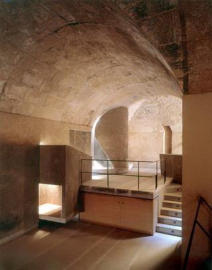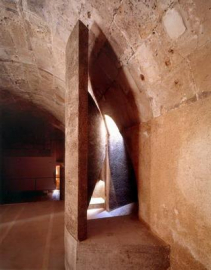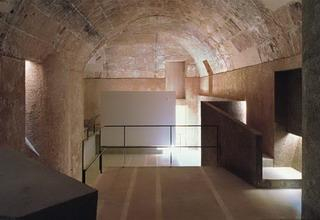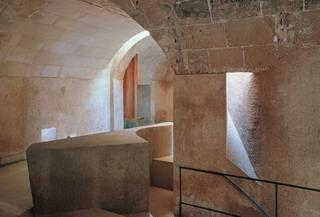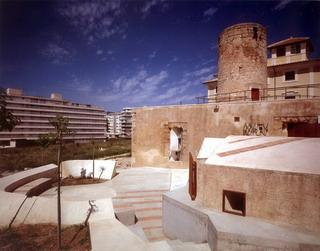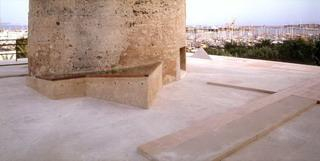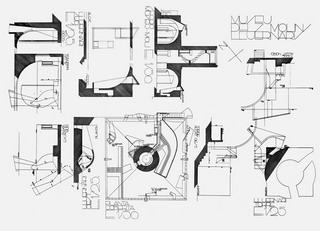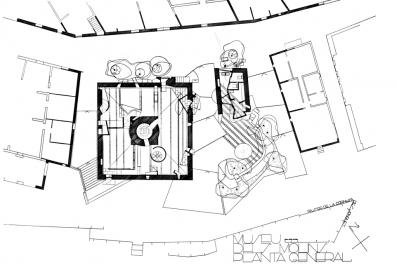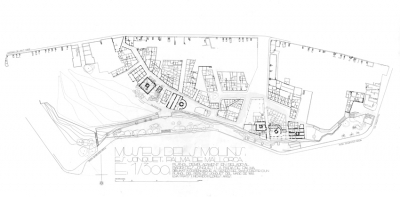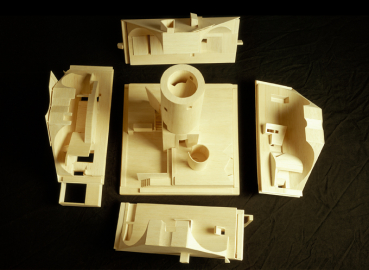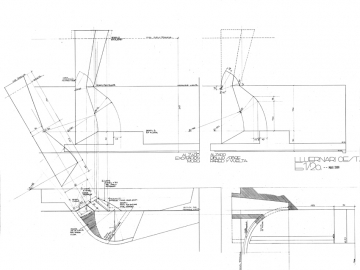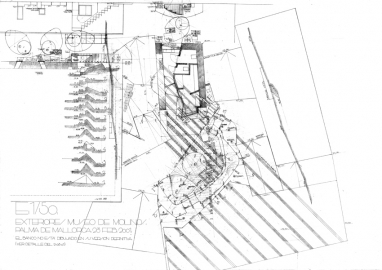Museum of the Mills of the Balearic Islands
Our eyes need a few minutes to adjust to the contrast between the sun outside and the regulated interior light. On entering these ancient, geometrically primitive constructions, it feels as we are entering a cave, as if we are walking into a space lit up for the first time.
In the Mills Museum, the skylights are always linked to the concept of erosion, of excavating the stone. That mass of Marés stone made us feel that the light would be stained as it passed through, giving the inside a colored light. The project sought to make the light take its time when crossing through the thick barrier between the outside and the inside. We began to understand and experiment with natural light as water, with the idea of liquid light. We experimented with its capacity of concentrating intensity, passing through thick stone walls, making its way to the inside.
Visitors to the museum pass through the middle of the rooms, in a half-light, until reaching a point lit up against the wall, pulling them toward it. These sanctuaries contain the objects on display, and are illuminated by a light opening that is out of sight. These folds and setbacks in the walls create recesses and chambers, defining the space through oblique light that escapes from the screens that hold it against the wall. The rough textures of the new surfaces create small shadows as the light passes through, continuing the etched circular surface of the Marés stone that has been accumulating marks for three centuries.
While work inside the museum takes place in the half-light, outside you are fully exposed to the sun. In the neighborhood of Es Jonquet, with its low buildings and very broad streets, volumes have clearly delineated shadows that are sharply defined against the sea or the sky.
The small square was not part of the initial brief, but it was gradually incorporated to provide an entrance to the new museum. It is an open-air vestibule, and fits in perfectly to the neighborhoods daily routines as an empty space that belongs both to the neighborhood and to the sea. It is an intermediary space, and the arm stretched out by the kiosk to surround part of the public space connects two urban systems, somewhere for visitors and locals alike.
The terrace above the museum is an extension of the entry plaza on a different level. Even more exposed to the sky and isolated from the continuity of the streets, it receives fewer visitors. From this vantage point, the construction is more connected to Palmas bay than to the immediate neighborhood, as a reminder that this is a fishing community with a maritime heritage.
The rehabilitation of this XVIIth Century flour mill into a museum defines our position regarding the possibilities of reusing and reoccupying old structures, before thinking in demolishing them and start from new. We believe that it is key to work assessing the qualities of old buildings, its physical and material qualities, but also the spatial ones. Not only makes sense from a responsibility linked to ecology and sustainability, but also making it a challenge to know if, as a society, we will be able to reinstate these existing buildings on the future of the city.

